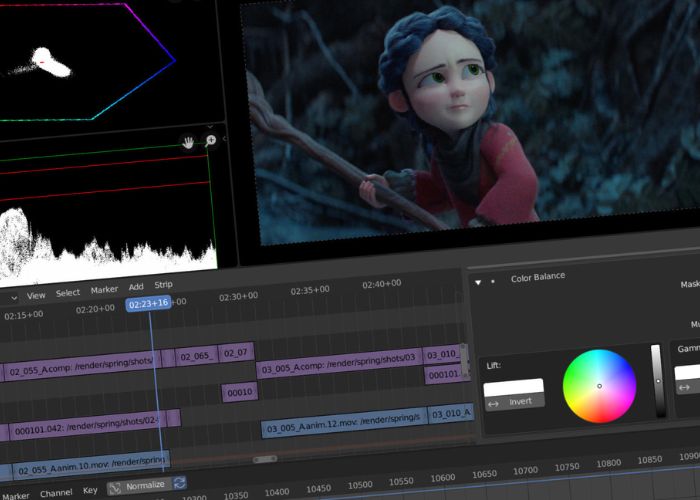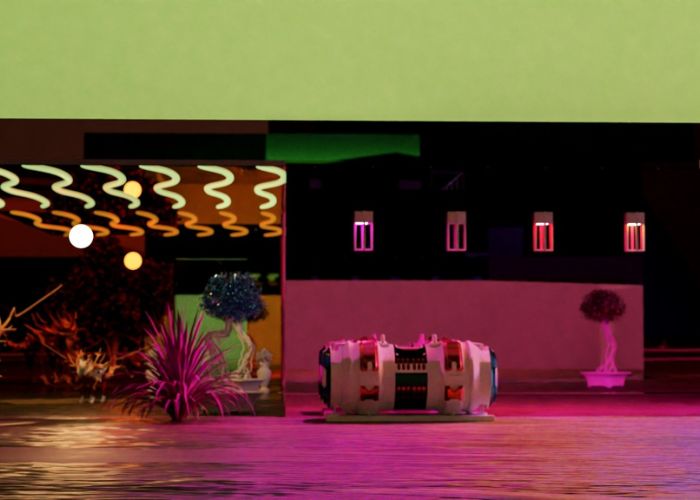In the seven years that I’ve been in the industry, we’ve seen a lot of advancements in video editing software. Blender is the program that has really stood out to me as of late. From its modest origins as an open-source 3D creative application, Blender has grown into a formidable tool for video editing and compositing. Let’s read below about “Blender for Video Editing: How It’s Innovating in 2024”.
In this essay, I will share my knowledge as an experienced video editor and discuss how Blender is changing the game in the year 2024.
Blender for Video Editing: How It’s Innovating in 2024
Interface and Workflow
An essential component of any video editing software is its user interface and workflow. Blender has recently excelled in this regard. You can tailor the new interface to your present task by making use of the customizable workspaces. In a video editing workstation, for instance, the timeline takes center stage, making for an extremely user-friendly layout.
With Blender’s many shortcuts and features, you can speed up tedious tasks. Being able to stack timeframes and sequences makes projects much easier to manage. The workflow in Blender feels fast and versatile in comparison to other non-linear video editors I’ve tested.
Video and Audio Editing Tools
Blender is a video editing package in a nutshell. You can do anything you would with a regular nonlinear editor, including cut, paste, add, and remove objects, and make ripple modifications, among many other things. The timeline is a great tool for editing and superimposing multiple audio and video tracks.
The built-in mixer in Blender allows you to apply a wide variety of effects to your audio tracks, including limiting, compression, reverb, and more. On the waveform monitor, you may observe the volume levels of the audio while you edit. Blender gives you all the tools you need to edit simple videos like a pro.
Motion Tracking and Camera Tools
Blender is the best program out there for camera tools and motion tracking. Analyzing film and using Blender’s powerful tracking capabilities, you can rebuild scene geometry and camera motion in 3D. This is how you add new visual elements to an older film.
You may achieve photorealistic representations with precise shadows, perspective, and motion by tracking a scene, simulating the camera’s movement in three dimensions, and adding additional three-dimensional objects. Consequently, there is a seemingly endless amount of potential visual effects work.
Read More:-Innovative AI Photo Editing Tools in 2024: Skylum Luminar Neo & More
The in-built features in Blender allow you to simulate the feel of a real camera by adjusting parameters such as sensor size, aperture, shutter speed, and focal length. The results will be footage that looks more like a film. The tracking and camera capabilities of Blender are competitive with those of more costly visual effects applications.
Video Compositing and Visual Effects
You can stack and blend video clips infinitely with Blender’s node-based compositor, in addition to the fundamental editing tools. Tools such as filters, transformations, and color correction nodes can be used to create one’s own unique effects.
The keyframing approach also allows for the animation of parameters over time. Making professional-looking titles, transitions, and motion graphics is as easy as using your editing tools.
According to blender, Blender is compatible with the Eevee real-time render engine. You can work with 3D objects, lighting, and materials to create photorealistic composites. Even when pitted against dedicated compositing applications like Nuke and Fusion, Blender proves to be a formidable opponent.
Compatibility and Output
Compatibility and output choices are of the utmost importance when dealing with professional video files. Blender is compatible with all the major video, image, and audio formats, so you can edit footage from any camera with ease. The editor’s timeline makes it easy to import and import video clips of varying sizes, frame rates, and aspect ratios.
Blender supports a wide variety of video codecs, including the popular HEVC, Apple ProRes, and H.264 formats. Additionally, you have the option to export high-quality photo sequences or files if needed. When it comes to working with professional clients, Blender offers all the features and compatibility I need in terms of output possibilities.
Read More:-Top Video Editing Software 2024: Adobe Premiere Pro vs. Final Cut Pro
Community and Development
One of the things that really sold me on Blender was the vibrant community that has formed around it. Blender is open source, which means it gets updates and fixes from a large community all around the world. New features, bug fixes, and enhancements are added with each release, which happens every few months.
The work is being guided by industry experts who are well-versed in the needs of practical production. You can’t beat the community as a resource for learning and problem-solving. For Blender, the idea of community support and active development has been a game-changer.
Conclusion
As a long-term video professional, I am absolutely impressed by the amount of progress Blender has achieved in the last many years. It started out as an open-source 3D program but has now grown into a powerful video editor with effects and compositing features fit for pros.
Blender has a wide variety of tools, an intuitive interface, and a flexible workflow that might make it ideal for making short films, documentaries, vlogs, and more. The possibilities of visual effects production have been expanded by advances in motion tracking and compositing. Plus, the open source community concept of Blender means that new features and enhancements are added frequently.
These considerations lead me to believe that Blender will continue to revolutionize video editing well beyond the year 2024. It unlocks capabilities that were previously reserved for commercially accessible, high-priced software and hardware. For independent artists and small studios on a budget, Blender is the go-to program. It will be fascinating to see how it develops over the years. I hope you like reading “Blender for Video Editing: How It’s Innovating in 2024”.
